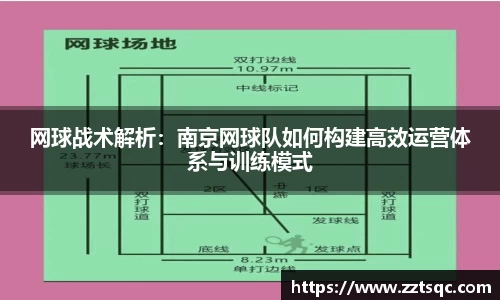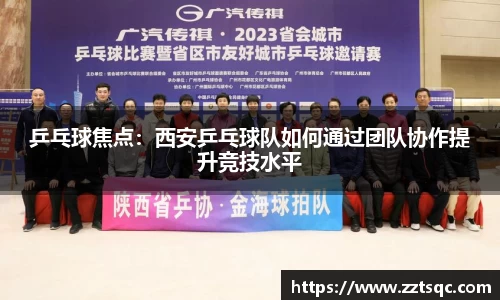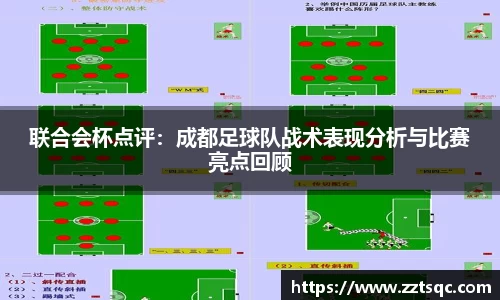网球战术解析:南京网球队如何构建高效运营体系与训练模式
高效运营体系构建
南京网球队的高效运营体系是其成功的核心组成部分。首先,团队管理模式的科学性和系统性为球队的长远发展奠定了基础。通过明确各部门职责与任务分工,南京网球队能够在资源配置上做到合理有效,从而最大化提升训练和比赛的效率。
其次,信息化管理手段的引入使得南京网球队能够实时跟踪运动员的表现数据。借助现代科技手段,如数据分析软件和监控设备,教练团队可以准确评估每位选手的技术水平及体能状况。这种数据驱动的方法不仅有助于制定个性化训练计划,更能及时调整战略,以适应不同对手的特点。
最后,南京网球队注重与外部资源的合作,包括高校、科研机构以及体育用品企业等。在这些合作关系中,球队不仅获得了先进的训练理念,还引入了最新的运动装备,这进一步提升了整体运营效率。

系统化训练模式
南京网球队采用系统化训练模式,将理论与实践相结合。在日常训练中,他们重视基础技能和战术意识并行发展的重要性。通过分层次、分阶段的训练计划,各个年龄段和水平的运动员都能够在适合自己的环境中不断提高。
与此同时,南京网球队还特别强调心理素质培养。竞技体育不仅考验身体能力,更需要选手具备坚韧不拔的意志力。通过模拟比赛场景、开展心理辅导课程等方式,帮助运动员应对比赛压力,提高临场发挥能力,从而增强整体竞争力。
此外,团队协作也是南京网球队训练过程中不可或缺的一部分。他们通过双打练习、团体赛等形式,加强队员之间配合默契度,使得每位成员都能在实战中感受到团队的重要性。这种集体荣誉感激励着运动员更加努力地追求卓越。
针对性的战术安排
在战术安排上,南京网球队以对手为中心进行针对性研究。他们会详细分析每一位对手的数据,通过录像回放等方式了解对方技术特点,从而制定出切实可行的比赛策略。这种前期准备工作让队员们在面对不同类型选手时,都能游刃有余。
同时,在比赛过程中,根据实时情况灵活调整战术也成为南京网球队的一大特色。当发现原定战略难以奏效时,他们会迅速做出反应,通过即时沟通进行战术调整,以最大限度降低失误率,提高胜算机会。
最终,通过这种持续优化与动态调整相结合的方法,南京网球队能够形成独特且有效的战术风格,使他们在各类赛事中具备更强竞争力,并赢得佳绩。
人才培养机制完善
Nanjing Tennis Team has established a comprehensive talent development mechanism. This begins with the identification of potential players at a young age, where coaches scout for raw talent in schools and local clubs. By establishing grassroots programs, the team aims to create a steady pipeline of skilled athletes who can progress through their ranks.
The training system for these young talents is well-structured, emphasizing not only technical skills but also physical conditioning and mental fortitude. Coaches are trained to provide holistic guidance that fosters both athletic ability and character development, ensuring that the players grow into well-rounded individuals.
An important aspect of this mechanism is mentorship. Experienced players are encouraged to take on mentoring roles for younger teammates, creating an environment of learning and support within the team. This not only enhances the skill levels of emerging players but also strengthens team cohesion as they learn from one another's experiences.
总结与展望
Nanjing Tennis Team’s approach to building an efficient operational system and training model reflects their commitment to excellence in competitive tennis. Their systematic methods ensure that every player receives tailored training while fostering a collaborative spirit among teammates. With data-driven strategies guiding their tactics, they remain adaptable in high-pressure situations.
The future looks promising as they continue refining their mechanisms for talent development, ensuring that new generations are equipped with both skills and mental resilience. As they aim for even greater heights in national and international competitions, the strategies employed today will likely set the foundation for tomorrow’s success.


